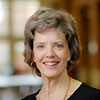This article is more than 5 years old.
Today, I completed a four week online course title “Rethinking Reference Collections” which was offered by Infopeople and was taught by Dave Tyckoson, Associate Dean of the Library at the University of California, Fresno. Dave spent many years as a reference librarian and is still a reference librarian at heart! One of my new job responsibilities is collection management of our reference collection, so Roz encouraged me to take this course and Lynn very generously provided funding. The timing of this course fortuitously came just as we are preparing for a massive weeding of the reference collection in preparation for the consolidation of the reference and circulation desks next year.
There were 74 participants for this course coming from a wide variety of libraries from small public libraries to Stanford and UCLA (most libraries represented were from California). Here are the highlights of what I learned:
- The first week, the punch line was: All librarianship is local!! It is our responsibility to tailor our collections to the needs of our community.
- The second week we did usage studies of our reference collections. Thanks to Carol Cramer, I learned that we have 9,994 unique titles in our collection and 22,704 volumes. Tim Mitchell graciously created an Excel spreadsheet of our usage for the week; the spreadsheet was used as a model in our WebEx class for how to manipulate the data to make decisions about what to weed from our collections. That week, we had 148 titles scanned in from Reference. As Dave observed, we have a highly used collection, particularly in our religion section (no surprise to any of us who work at the reference desk). Having all reference materials bar coded is the optimal way to assess usage. Hats off to those who thought of bar coding the reference collection and implemented the system-you earned a star for our library in this class!.
- The second week, we also compared print and electronic resources. We were given access to the online version of World Book as well as Oxford Reference Online. What struck me about both online sources was how far we are from seeing the power of the web in reference resources! The Oxford Reference materials are just the print materials put online (similar to the Gale Reference Sources). There are no updates, videos, visuals, etc. World Book is better, but still very much like the print with some links thrown in to websites and videos. The online reference materials are still very bland and usually no more up-to-date than what we have on our shelves. While access is much more convenient through the web, the presentation is no better. As more libraries move to electronic sources, it is my hope that publishers will seriously upgrade the content and presentations! They are competing with Wikipedia, shouldn’t Oxford Reference be and look more cutting edge? I will say the same for Gale Virtual Reference, our current electronic reference resource of choice. Can they please upgrade their products to be more than reprints from their print collections?
- The third week he introduced the concept of circulating reference materials. It seems that the current trend is to allow reference materials to circulate for 3 days at a time. Dave advocates creating a ready reference collection that does not circulate and then allowing all other reference materials to circulate. He suggests putting the circulating reference materials in the main stacks with special marking on the books for 3 day check out. This was something I had not really thought about and I’m still chewing on the idea for our collection. It is clear to me that we have many reference books that will need to be in our ready reference collection. The question is whether or not we need the 3 day check out option for the books we move to the stacks, or should they just circulate like regular titles?
- The current trend is to move to electronic resources while print reference collections are shrinking. However, he predicts that as we allow reference books to circulate, the use of print reference materials will go up.
- Another thing to ponder is how we will promote the use of our reference resources. I plan to do some informal usability testing with our students at the reference desk to see if they have a clue about where to go to find encyclopedia articles from our Databases page. Do they know what Gale Virtual Reference Library contains? I’m putting this on my to do list for the second half of the semester!
- The last helpful piece of this course was learning that there are tools that will specifically search reference collections. One is called Paratext and it searches electronic and print collections. The next one is Credo Reference and it searches across all electronic reference materials. These tools are seriously meeting a need and I wish we had Paratext (though I have never seen it in real life). I wish we could get Summon to easily navigate and limit to our reference sources; that is something we will probably see by the time Summon 10.0 is released!
Overall, I really enjoyed this course and the online learning environment! Thank you, Roz and Lynn for making this possible!

4 Comments on ‘Rethinking Reference Collections’
I love that you could share the collection’s usage stats! It sounds like this was a worthwhile online course.
Sounds like a good learning opportunity! Thanks for sharing!
I LOVE our Reference Section! It got me through a tough class in Library School. I’m sure you have some tough decisions ahead of you. Best of luck!
There is a lot of info packed in here. Good for you, Joy!